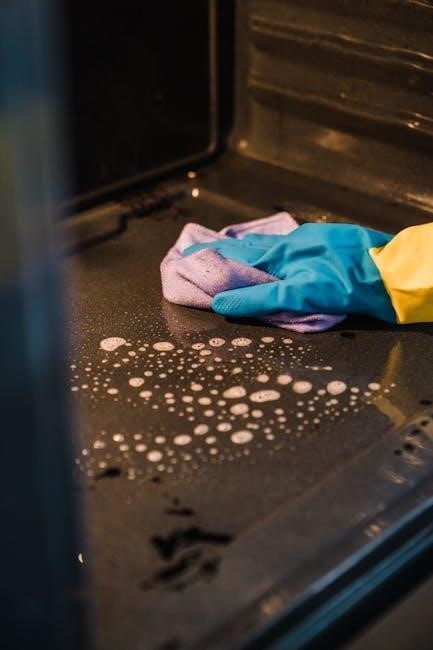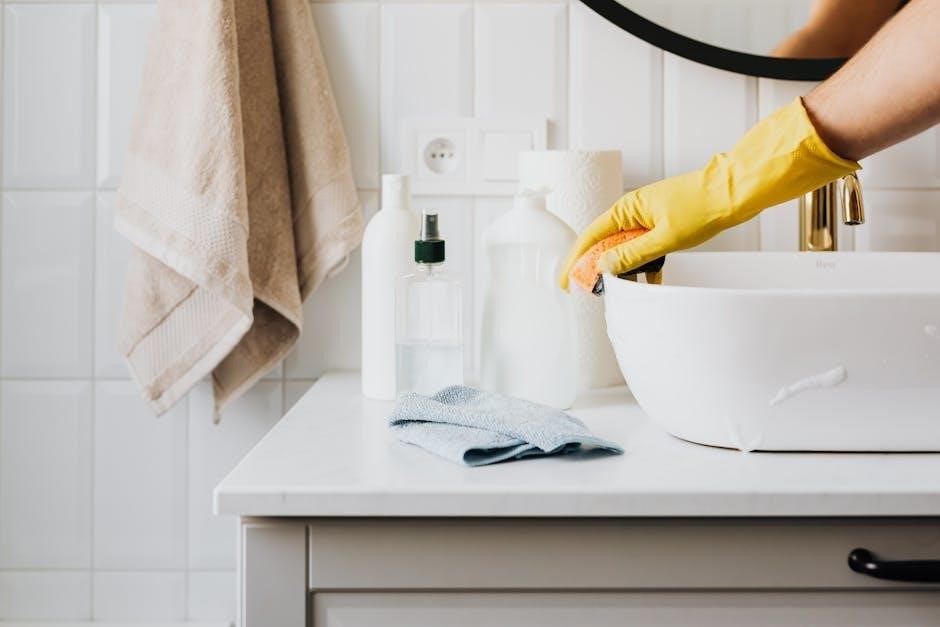Rubber dam clamps are essential tools in dental procedures, providing isolation, enhancing visibility, and improving accessibility. They ensure patient safety and efficiency in various dental treatments.
What Are Rubber Dam Clamps?
Rubber dam clamps are dental instruments used to securely hold a rubber dam in place during procedures. They are designed to isolate the tooth or teeth being treated, ensuring a dry, clean environment. Clamps come in various types, including molar, premolar, and incisor clamps, each tailored to fit specific tooth shapes and sizes. They are typically numbered and correspond to particular teeth for accurate placement. The clamps feature metal frames with rubber or elastomeric components to provide a secure grip without damaging the tooth or surrounding tissues. Their primary role is to enhance accessibility, visibility, and moisture control, making dental work more efficient and precise. Properly used, rubber dam clamps are indispensable for effective dental care and patient safety.
Importance of Rubber Dam Clamps in Dental Procedures
Rubber dam clamps play a crucial role in dental procedures by providing a sterile, isolated environment. They ensure maximum retraction of soft tissues, improving accessibility and visibility for the dentist. Effective moisture control is another key benefit, preventing saliva and blood from interfering with the procedure. This isolation enhances precision and reduces the risk of contamination, making treatments safer for patients. Additionally, clamps protect the surrounding tissues and prevent chemical exposure during procedures like filling placements or root canals. Their use streamlines the process, allowing dentists to work more efficiently. Overall, rubber dam clamps are essential for maintaining a controlled environment, ensuring both patient safety and the success of dental treatments.

Types of Rubber Dam Clamps
Rubber dam clamps are categorized into molar, premolar, and incisor clamps, each designed for specific tooth types to ensure proper fit and stabilization during dental procedures.
Molar Clamps
Molar clamps are specifically designed for use on molar teeth, which are larger and have a more complex anatomy compared to premolars and incisors. These clamps are wider and feature a stronger retention system to securely hold the rubber dam in place during procedures involving molars. Their robust design ensures stability, even in cases where access is challenging. Molar clamps are numbered to correspond with specific tooth types, making selection easier for dental professionals. Proper fit is crucial to avoid discomfort and ensure effective isolation. Testing clamp stability by gently lifting in the correct direction helps confirm retention. With their durable construction, molar clamps are essential for efficient and safe dental treatments involving posterior teeth.
Premolar Clamps
Premolar clamps are designed for use on premolar teeth, offering a versatile solution for dental procedures. These clamps are slightly smaller than molar clamps but larger than incisor clamps, making them suitable for teeth that are intermediate in size. They are numbered to correspond with specific premolar teeth, ensuring accurate selection. Premolar clamps feature a balanced design that provides reliable retention while maintaining patient comfort. Their unique shape allows for proper fit around premolars, which have distinct anatomical features. Testing stability by gently lifting the clamp helps confirm its secure placement. Proper sizing is crucial to avoid displacement during procedures. With their adaptability and effectiveness, premolar clamps are indispensable for achieving optimal isolation in a wide range of dental treatments.
Incisor Clamps
Incisor clamps are specifically designed for use on incisor teeth, which are smaller and more delicate compared to molars and premolars. These clamps are smaller in size and have a more precise design to accommodate the unique anatomy of anterior teeth. They are carefully shaped to fit around the incisors without causing discomfort or damage. Incisor clamps are essential for procedures requiring isolation of front teeth, such as cosmetic dentistry or endodontic treatments. Their compact structure ensures minimal interference with surrounding tissues, while still providing secure retention. Proper sizing and placement are critical to ensure stability and avoid displacement during procedures. Testing the clamp’s stability by gently lifting it helps confirm its secure fit. Incisor clamps are a vital tool for achieving effective isolation in treatments involving the anterior region.

Choosing the Right Rubber Dam Clamp
Selecting the appropriate rubber dam clamp requires understanding the tooth type, shape, and dimensions to ensure proper fit and stability during dental procedures.
How to Select the Correct Clamp for the Tooth Type
Selecting the right clamp involves identifying the tooth type, such as molar, premolar, or incisor, and matching it with the appropriately numbered clamp. Each clamp is designed for specific tooth shapes and sizes, ensuring a secure fit. Proper alignment and gentle placement are crucial to avoid discomfort and ensure stability. Testing retention by lifting the clamp gently can confirm a proper fit. Incorrect clamps may lead to poor retention or instability, affecting procedure efficiency. Always refer to guides or manufacturer recommendations to choose the correct clamp for optimal results.
Understanding Clamp Shapes and Dimensions
Clamp shapes and dimensions are designed to accommodate specific tooth types, ensuring a precise and comfortable fit. Molar clamps, for example, are larger and bulkier, while incisor clamps are smaller and more delicate. The unique contours of each clamp align with the tooth’s anatomy, providing optimal retention and stability. Properly sized clamps prevent soft tissue trauma and ensure adequate isolation. Understanding these variations allows dentists to select clamps that match the patient’s dental structure, enhancing procedure efficiency and patient safety. The right shape and size are critical for effective rubber dam isolation, making it essential to familiarize oneself with the available options.
Testing Clamp Stability and Retention
Testing clamp stability and retention ensures secure placement during dental procedures. Gently lift the clamp in the specified direction to assess its hold. Proper retention prevents movement, while stability ensures it remains firmly in place. If the clamp shifts or feels loose, it may require adjustment or a different size. Regular testing helps maintain procedural efficiency and patient safety, preventing complications. This step is crucial for achieving optimal isolation and ensuring successful outcomes in various dental treatments. Always verify clamp stability before proceeding to guarantee a secure and effective rubber dam setup.

Advantages of Using Rubber Dam Clamps
Rubber dam clamps offer enhanced accessibility, visibility, and moisture control. They improve patient safety, provide efficient isolation, and ensure optimal dental procedure outcomes.
Improved Accessibility and Visibility
Rubber dam clamps significantly enhance accessibility and visibility in dental procedures by retracting soft tissues effectively. This allows dentists to work in a clear, unobstructed environment, improving precision and efficiency.
The clamps ensure maximum retraction, exposing the operating field fully. This visibility is crucial for complex procedures, enabling better control and reducing the risk of complications during treatment.
Effective Moisture Control
Rubber dam clamps play a critical role in achieving effective moisture control during dental procedures. By isolating the treatment area, they prevent saliva, blood, and other fluids from interfering with the work. This isolation ensures a dry, clean environment, which is essential for many dental materials to function properly, such as adhesives and cements. Moisture control also reduces the risk of contamination, improving the overall success of the procedure. Additionally, maintaining a dry field enhances visibility for the dentist, allowing for more precise and efficient treatment. Effective moisture control is a cornerstone of successful dental care, and rubber dam clamps are indispensable in achieving this goal.
Enhanced Patient Safety
Rubber dam clamps significantly enhance patient safety during dental procedures. By isolating the treatment area, they prevent accidental ingestion or aspiration of instruments, debris, or materials. This isolation minimizes risks associated with choking or foreign object aspiration, creating a safer environment for patients. Additionally, the rubber dam acts as a barrier, reducing the spread of aerosolized particles, which is particularly important for infection control. Enhanced visibility and accessibility also allow dentists to work more precisely, reducing the likelihood of accidental tissue damage. Overall, the use of rubber dam clamps prioritizes patient safety, making dental procedures more secure and reliable. This emphasis on safety is a key benefit of incorporating rubber dam clamps into routine dental care.
Rubber Dam Clamp Materials and Construction
Rubber dam clamps are crafted from high-quality, durable materials, ensuring longevity and reliability. Their robust design features precise engineering for optimal performance, making them essential for secure isolation during procedures.
Quality of Materials Used
Rubber dam clamps are typically made from high-grade stainless steel, known for its durability and resistance to corrosion. The materials are carefully selected to ensure they can withstand repeated sterilization processes without losing their structural integrity. Additionally, the rubber components are made from latex or latex-free alternatives, providing a secure seal around the tooth. These materials are chosen for their biocompatibility, ensuring patient safety and comfort during dental procedures. The clamps’ construction emphasizes precision engineering to maintain consistent performance over time, making them a reliable choice for dental professionals.
Design Features for Optimal Performance
Rubber dam clamps are designed with precision to ensure optimal performance during dental procedures. Their ergonomic handles provide a secure grip, reducing hand fatigue. The clamps feature adjustable tension, allowing for a customized fit around the tooth. Smooth, rounded edges prevent irritation to soft tissues, enhancing patient comfort. Many clamps are designed with universal compatibility, fitting various tooth shapes and sizes. Some models include interchangeable components, offering versatility for different clinical needs. The compact design minimizes interference with surrounding structures, improving accessibility. These design elements work together to ensure reliable isolation, stability, and ease of use, making rubber dam clamps indispensable for efficient and effective dental care.

How to Use Rubber Dam Clamps
Using rubber dam clamps involves selecting the appropriate size, placing the clamp gently around the tooth, and securing the rubber dam to isolate the area effectively.
Step-by-Step Guide to Placing the Clamp
Placing a rubber dam clamp begins with selecting the correct size based on the tooth type. Gently position the clamp around the tooth, ensuring it fits snugly without causing discomfort. Next, attach the rubber dam to the clamp, stretching it over the wings to secure it in place. Adjust the clamp to ensure proper isolation of the treatment area. Finally, check the stability and retention by gently tugging on the clamp to confirm it holds firmly. Proper placement is crucial for effective isolation and patient comfort during dental procedures; Always follow manufacturer guidelines for precise placement techniques.
Securing the Rubber Dam
Securing the rubber dam involves stretching it over the clamp’s wings to ensure a tight, even fit. Start by placing the dam over the clamp, then gently pull it around the edges to cover the desired teeth. Use dental floss or a dam stretcher to ensure proper tension and eliminate wrinkles. Once in place, check the seal around each tooth to confirm isolation. Properly securing the dam prevents saliva and bacteria from interfering with the procedure. Ensure the dam is snug but not overly tight to maintain patient comfort. This step is critical for maintaining a sterile environment and allowing uninterrupted work during dental treatments. Always verify the dam’s position before proceeding with any procedure.
Removing the Clamp Post-Procedure
Removing the clamp post-procedure requires careful technique to avoid discomfort or injury. Start by gently rocking the clamp back and forth with forceps to release its grip on the tooth. Once loosened, lift the clamp away from the tooth, taking care not to pull or jerk abruptly. After removal, inspect the area for any remaining dam material or tension; Ensure the tooth and surrounding tissues are free from residual stress. Properly dispose of the used rubber dam and clean the clamp for sterilization. This step ensures patient comfort and prepares the clamp for future use. Always prioritize gentle handling to maintain patient trust and safety during the removal process.

Troubleshooting Common Issues
Common issues with rubber dam clamps include poor retention and instability. Identify causes like improper sizing or positioning, and adjust or replace the clamp as needed.
Addressing Poor Retention
Poor retention of rubber dam clamps can hinder dental procedures. Identify causes such as improper sizing, incorrect positioning, or clamp damage. Start by selecting the correct clamp size for the tooth type, ensuring a snug fit without causing discomfort. Adjust the clamp’s position to ensure even contact with the tooth structure. If issues persist, inspect the clamp for wear or damage and replace it if necessary. Proper technique and regular maintenance can prevent retention problems. Ensuring a secure fit is crucial for effective isolation and successful outcomes in dental treatments. Addressing retention issues promptly helps maintain procedure efficiency and patient safety. Regular training and practice can improve clamp placement skills. Always follow manufacturer guidelines for clamp care and replacement to avoid recurring retention problems. Proper retention ensures optimal performance and patient comfort during procedures.
Fixing Clamp Stability Problems
Stability issues with rubber dam clamps can disrupt dental procedures. To address this, ensure the clamp is correctly seated on the tooth, avoiding uneven contact. Check for proper alignment and tighten the clamp gently but firmly. If instability persists, inspect for worn or damaged components and replace them as needed. Using the correct clamp size for the tooth type is crucial for stability. Additionally, verify that the rubber dam is securely attached to the clamp to prevent movement. Regular maintenance, such as cleaning and inspecting clamps, can prevent stability issues. Proper training in clamp placement and adjustment is essential for achieving reliable stability. Ensuring clamp stability enhances procedure efficiency and patient safety. Always refer to manufacturer guidelines for specific recommendations on maintaining clamp stability.
Best Practices for Rubber Dam Clamp Usage
Proper sterilization, regular maintenance, and correct placement are essential for effective rubber dam clamp usage. Always handle clamps gently to prevent damage and ensure longevity.
Proper Sterilization Techniques
Proper sterilization of rubber dam clamps is crucial for infection control. Autoclaving is the most effective method, ensuring clamps reach optimal temperatures to kill pathogens. Chemical disinfection can be used for non-autoclavable materials. Always clean clamps thoroughly before sterilization to remove debris. Store clamps in a dry, sterile environment to prevent contamination. Regularly inspect clamps for wear and tear, as damaged clamps may harbor bacteria. Follow manufacturer guidelines for sterilization cycles and chemical concentrations. Proper handling and storage ensure clamps remain effective and safe for patient use. Adhere to dental standards for sterilization to maintain a hygienic environment.
Maintenance and Storage Tips
Proper maintenance and storage of rubber dam clamps are essential for extending their lifespan and ensuring optimal performance. After sterilization, clamps should be stored in a cool, dry place to prevent corrosion and contamination. Regularly inspect clamps for signs of wear, such as bent or corroded metal parts, and replace them as needed. Store clamps in an organized manner, separating them by type or size to avoid mixing and damage. Avoid exposing clamps to extreme temperatures or harsh chemicals, as this can degrade materials. Handle clamps gently to prevent bending or breaking. Clean clamps thoroughly before storage to remove any residue. By following these tips, you can maintain the quality and functionality of your rubber dam clamps.
Rubber dam clamps are vital for efficient dental procedures, ensuring isolation and patient safety. Proper use enhances outcomes, making them indispensable tools for modern dentistry.
Final Thoughts on Effective Rubber Dam Clamp Usage
Effective rubber dam clamp usage is key to successful dental procedures. Proper selection, placement, and maintenance ensure optimal isolation, visibility, and patient safety. Regular sterilization and storage prolong their lifespan. By understanding tooth types and clamp designs, dentists can maximize efficiency. Testing stability and addressing retention issues are crucial for reliable outcomes. Following best practices enhances both procedure effectiveness and patient comfort. Investing in high-quality materials and staying informed about advancements ensure long-term success. With consistent practice, using rubber dam clamps becomes second nature, elevating the standard of dental care provided. Always prioritize proper techniques to achieve the best results.
Resources for Further Learning
For deeper understanding, explore detailed guides and tutorials on rubber dam clamps. Visit manufacturer websites for product specifics and instructional videos. Professional dental forums offer insights and troubleshooting tips. The Rubber Dam Kit (RDKIT) guide provides comprehensive information. Online courses and workshops can enhance practical skills. Stay updated with industry publications and case studies. Engage with communities to share experiences and learn from experts. Utilize these resources to master rubber dam clamp techniques and improve procedural outcomes. Continuous learning ensures proficiency and adaptation to advancements in dental care. These tools collectively offer a pathway to excellence in using rubber dam clamps effectively.
